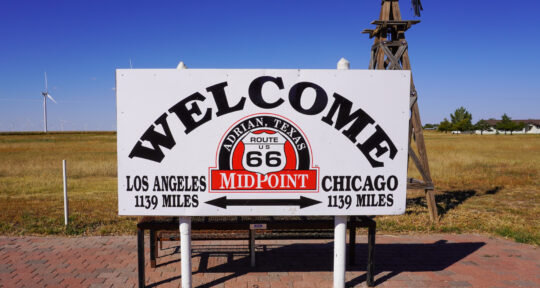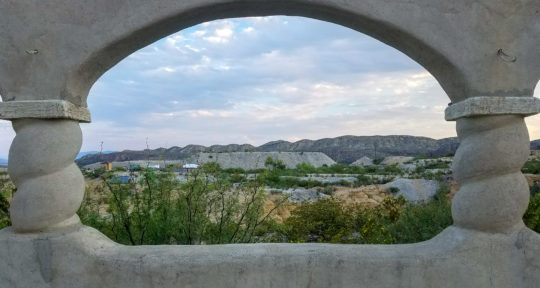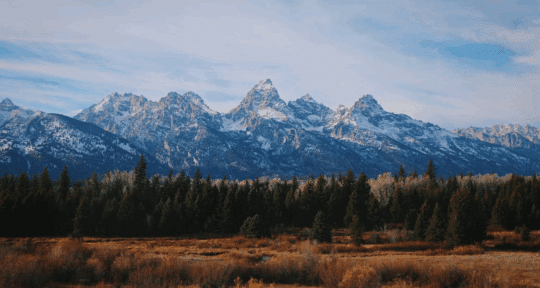There is always a sound at Tinkertown.
Sometimes it’s organic; the flitting of hummingbirds, the barking of dogs. Sometimes it’s manufactured; the blare of a one-man band playing hits of yesteryear. But most of the time, it’s a mixture; the clanking of cowbells mixing with the faint, upbeat sounds of circus music and exclamations of people passing through.
The excitement is merited because the sounds are accompanied by incredible sights: century-old carnival machines, brightly colored whirligigs, smirking wooden buzzards.
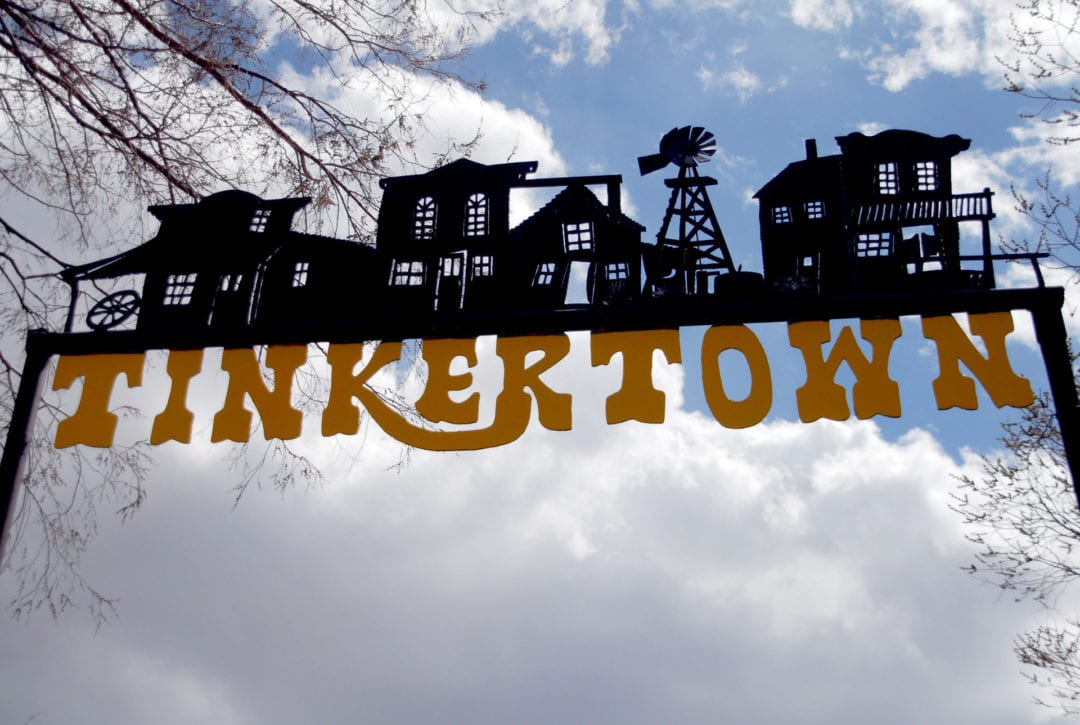
Tinkertown is, by its own signage, a museum. But it also serves as a curiosity cabinet and an intricate, ambitious art project. The dioramas and collections emphasize the past, but their presentation also showcases the hyper-artistic lens of their creator, Ross Ward.
From traveling to permanent
“I did all of this while you were watching TV,” Ward used to say when asked how he built his labyrinthine world. A lifelong lover of the antique and eccentric, Ward was particularly drawn to carnivals and circuses, roadside attractions, and the Old West. He channeled these passions into a career, painting murals and signs for various events around the country.
Along the way, Ward was also working in another medium: carving. His diorama of an Old Western town and its residents traveled with him for years, often displayed at whatever venue he happened to be working at.
Having fallen in love with New Mexico after working the state fair, Ward and his family moved to a cabin in the Sandia Mountains, 25 miles east of Albuquerque. Ward kept expanding his town, and gradually added new features as well. First, it was walls made of glass bottles. Then, in homage to another longtime love, he started carving a circus.
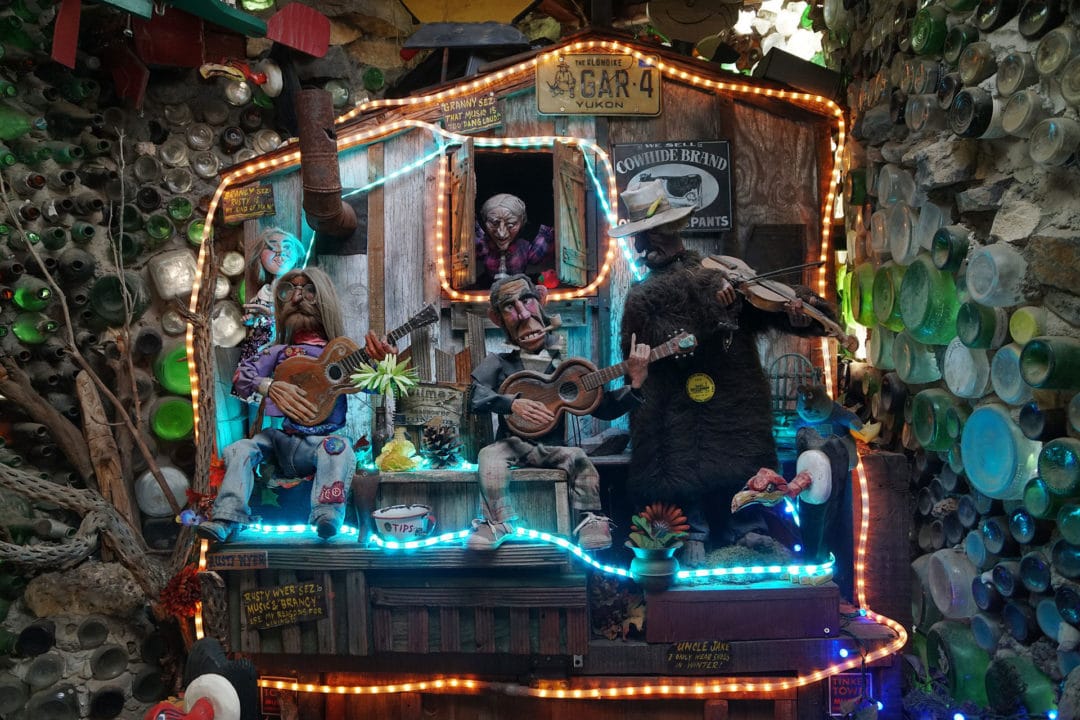
It was around this time that Ward began to seriously entertain the idea of turning his artwork into a more permanent attraction. And in 1983, at the suggestion of his wife Carla, he opened Tinkertown to the public.
Cowboys, carnies, and collections
The sheer density of things to take in at Tinkertown makes it difficult to accurately describe. One moment, you may be passing a model ice cream parlor and carved covered wagons parked out front. The next moment, you’ll find Mary Poppins hovering above the roof and plaintive country songs echoing overhead. Round the corner, and, for the price of a couple of quarters, you can shake the cold metal hand of an automated Uncle Sam. Keep going, and suddenly you’re at the Big Top, where dozens of human and animal performers move in perfect synchronicity.
From the tiny figurines tucked into every available space to the authentic Old West tools outside, there are layers upon layers to explore. The world that Ward created is mixed-medium; his original wood carvings mingle easily with found items, children’s toys, and vintage posters. It’s a place that is drenched in nostalgia, but always tongue firmly in cheek. The characters may be a little raunchy and strange, but they’re ultimately lighthearted.
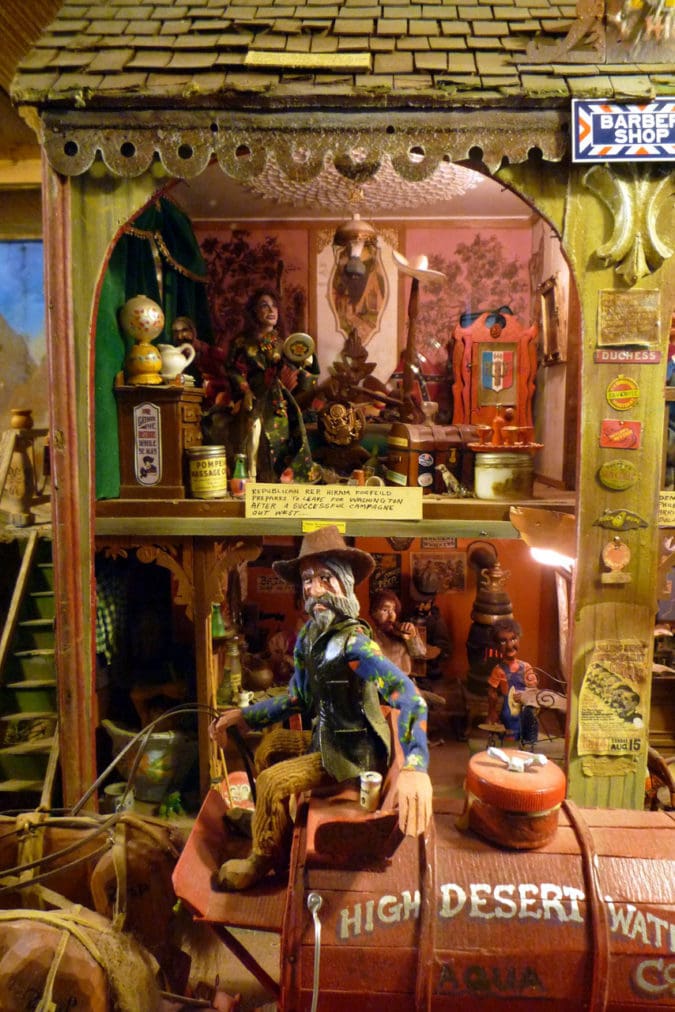

As intricate as Tinkertown is, it’s made all the more poignant by the fate of its creator. In 1998, Ward was diagnosed with Alzheimer’s. The disease, which impairs memory and neurological function, was devastating for the artist and nostalgist. But even as his symptoms worsened, Ward’s fertile mind kept working. One of his last projects involved covering a Jeep Cherokee in figurines and hundreds of pennies. Ward joked that he was “trying to turn it into a Lincoln.”
Although Ward passed away in 2002, the world he left behind ticks on. His daughter, Tanya Ward Goodman, explored her father’s legacy in her 2013 memoir, Leaving Tinkertown. It chronicles her experiences with her father’s unbridled imagination, as well as the difficult later years. In one section, Goodman offers a deeply personal interpretation of the space: “With a kind of prescient instinct, he built a walk-through scrapbook that, at least as I imagine it, is helping him stay with us as long as he can.”
Tinkertown lives on
Carla continues to live on the property and run the museum. In its first year of operation, Tinkertown saw 836 visitors; these days, it’s closer to 35,000 per season. Carla says that the advent of social media has helped tremendously. The museum’s unique location doesn’t hurt either.
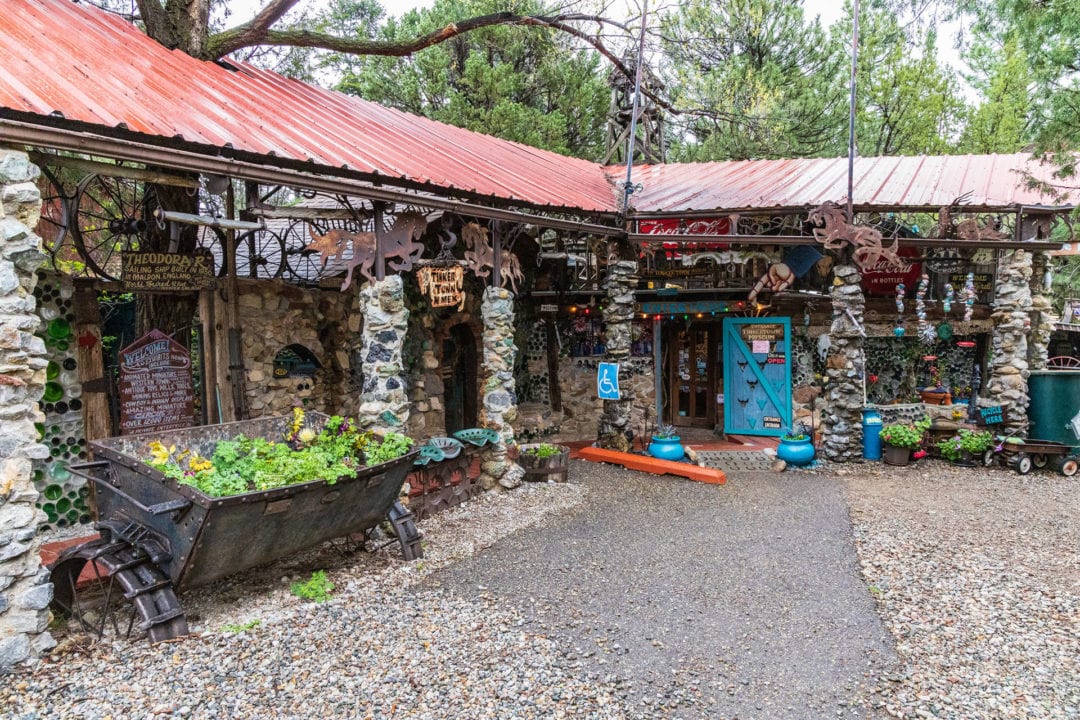
Tinkertown sits just off of the Turquoise Trail National Scenic Byway, which is frequented by tourists traveling between Albuquerque and Santa Fe. The Wards also helped to create the Turquoise Trail Association, which promotes local businesses and attractions. Today, Carla has five regular employees, with a rotating group of local young people working during the summers. “Everybody that lives around here is kind of involved in Tinkertown,” she says.
Even as the proprietor (and resident) of this space, Carla still enjoys its intricacy. “I’ve been here every day since we’ve been open, and I still find new things,” she says. By and large, the property has remained unchanged since Ward’s death; the only major addition has been Mr. Tinker “T” Bot, a massive sculpture with a handlebar mustache that started life as a leftover delivery box.
“It just all has grown organically, so… I’m letting it unfold as it directs us,” Carla says. She adds that “[Ross’] spirit is tweaking us, and giving us pointers.”
The power of persistence
The East Mountains region, where Tinkertown is located, is also where I grew up. It is ardently, unapologetically small. It’s the kind of place where a man routinely rides his horse to the bar, and where people find their great-grandparents in the local history books. But there is also an artistic current that runs strong through the area—in the galleries and the beautifully decorated homes of creative types who, just like Ross Ward, visited and fell in love.
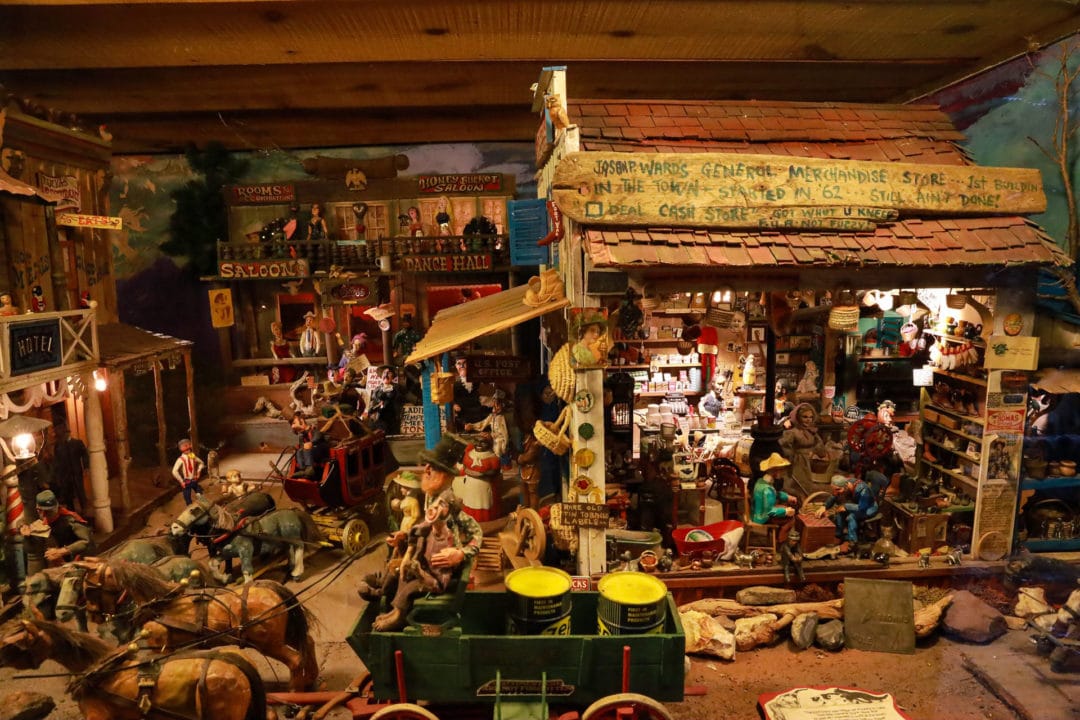
By and large, the people walking around this area tend to be local. Unless, that is, you’re at Tinkertown. This is a place that draws travelers from all over the country and the world. A large map hung by the museum gift shop confirms this: It’s filled with pushpins from far-flung cities and islands, each one representing somebody who pulled off the highway to visit. The museum is undoubtedly influenced by the surrounding land, and the land, to no small extent, is influenced by the museum.
Tinkertown is a rooted place. Its depth and breadth are testaments to the power of persistence, and the amazing artistic complexity that the right physical space can yield. But many of its characters speak to another, interconnected idea: the beauty of exploration. For a kid growing up in a rural area, this was a life-changing concept. As an adult revisiting, it feels life-affirming. Tinkertown could only have come from one man, but the creativity and passion it encapsulates could be a blueprint for anyone.
If you go
Due to the spread of COVID-19, many points of interest are currently closed and travel is not recommended. Please check with businesses directly for the latest information on hours, and follow your state and local guidelines. Stay safe!

